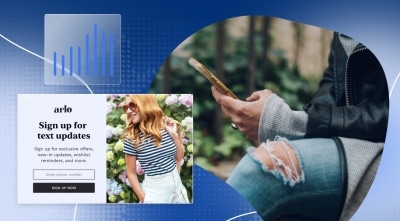Marketing
5 Steps for Comparing Your App Funnels: Organic vs. Marketing
December 30, 2014

Different apps and businesses each have unique conversion metrics. They range from social shares, to eCommerce purchases, to media downloads. Despite these differences, they all share one common trait: they have pathways leading up to them. These pathways are called conversion funnels. When you look at your acquisition strategy, it’s important to focus on how many of your users are converting. But to really understand how they’re engaging with your app, you should be comparing the conversion funnels of users acquired through organic channels versus those of users acquired through marketing.
Organic vs. Marketing: What’s the Difference?
The most common strategy for acquiring users organically is through App Store Optimization. Think of this as SEO for your App Store ranking. By fine-tuning your keywords, description and screenshots you can get your app in front of more people, with a better chance of them downloading. The biggest drawback of this method is that you can really only attract people who are actively searching for it.
On the other side of the coin is paid acquisition, or marketing. App marketers are attracted to it because of the amount of control they have. You can find generalized ad networks with massive inventories, or look for those that specialize by vertical like gaming or sports. From there you can find specific apps, stories and articles that are relevant to your app. This means you can get your app in front of people who may not be actively searching.
Building a healthy mix of both organic and marketing is crucial to maintaining a consistent flow of new users. With that said, your strategy will be unique to your app. After spending some time acquiring users from both channels, the next five steps will help you understand how to compare them (and why it’s important).
1. Split up your conversions by type
As an app marketer, one of your primary goals is to convert your users. But not all conversions are created equally, and neither should their funnels. Anything from downloads, registrations, social shares, premium subscription sign-ups, or simply responses to push notifications can count as conversions. You determine the value to your specific app and you can decide how much time to spend analyzing the conversion paths to each. To make that job easier, we split them into two distinct types.
The Pint Glass
The pint glass conversion funnel resembles the typical checkout process of an eCommerce app. This means it has many different steps, any of which users can either fall out of or continue through (payment info, shipping address, order review, etc). These are typically your main conversions, which means your app will probably only have a few different pint glass funnels. Keep in mind that while the checkout process is the most common example of a pint glass funnel, there are many other conversion paths that take this shape.

The Martini Glass
While this sounds fancier than the pint glass, there’s nothing fancy about it! It’s referred to as the martini glass because of its shape. While the pint glass is a deep funnel with many steps, the martini glass is a high-level funnel with typically only two steps. Unlike the pint glass, there can be dozens of martini glass funnels within your app. It allows you to take a large segment of users and look at specific conversion rates (they either converted or they didn’t).

Understanding the type and relative value of any given conversion funnel within your app means that you have a better idea of how to better spend your resources. So how do you determine value? Let’s take a look.
2. Split by acquisition source
Once we’ve got a good idea of the different types of funnels in our app, it’s time to get a high-level view of the differences between our paid and organic users. Splitting by acquisition source is a good first step.
Because paid advertising is highly targeted, there’s a good chance that the users acquired by this method are more valuable, more engaged users. But just because this is the case for a lot of apps, doesn’t mean it is for yours.

To take it a step further, look at the different channels within the paid source. You could be running a slew of different campaigns on Facebook, HasOffers and Google AdWords. By looking at how the users from these sources behave, you’ll be able to determine where your most valuable users are coming from, and allocate your marketing spend accordingly.
3. Split by acquisition campaign
Now that you’re starting to get a solid understand of the differences between your paid and organic users, it’s time to dive a little deeper. Say you’ve determined that users acquired through HasOffers are your most valuable. You start investing more of your advertising budget there. Through the HasOffers dashboard, you’re able to see which campaign is acquiring the most users. But what it doesn’t show you, is how valuable those users are. That’s why you want to start splitting by acquisition campaign.
This means taking the source, HasOffers, and looking at it at the campaign level. This allows you to get to the heart of the effectiveness of each campaign. If you only tracked the amount of new users acquired, you’re not getting the whole picture. By digging into it, you might find that although Campaign #1 has acquired 25% less users than Campaign #2, those users are converting at 2x the rate of those from Campaign #2.
4. Split by date
What if you have an app that experiences different volumes and types of traffic based on the season? How would you compare the engagement levels of users within these different time periods? Split your funnels by date.
A travel app like Kayak, for example, sees peaks and valleys in their user counts all the time. They could utilize this split by comparing their “Winter Holiday” users to their “Spring Break” users. From there they can identify the better performer and drill down to examine the reasons why and apply that logic to the underperformer.

Another reason to split by date would be if you receive press coverage or have just launched some third-party advertising (could be acquisition or just general branding). You can measure how these outside influencers affect overall usage and engagement between the different time periods. You may be surprised to find an increased user count with lower value users across the board.
If you determine a particular pattern of higher engagement with your organic users, for example, then you may be able to dial back the spend on some of your paid campaigns during that time period.
5. View dropoff from particular screens
One of the most important steps for you as an app marketer is to set expectations for the user during the discovery process. Users who come from different channels and sources will have different expectations and presumptions about your app. By looking at the different funnel events, not only can you identify the conversion rate between each step, but also where the potential fallout may exist within your conversion path.

You may find there users in your organic funnels have a much higher fallout rate after the first launch screen. It’s likely that your listing in the App Store sets vague expectations for the user. Once they open it for the first time and realize they didn’t get what they bargained for, they’re likely to abandon the app. It’s time to take an honest look at your listing and make some tweaks to better set up your organic users.
Optimize for the User
The behavior and decisions of your users manifest themselves as steps within your conversion funnels. It’s the closest we can get to understanding the ‘why’ behind your user engagement. When analyzing these funnels, it’s important to remember to use that data to inform the decisions about your acquisition strategy. Monitoring, tweaking and optimizing it is crucial to ensuring you’re bringing the most valuable users to your app.
This article originally appeared on Business2Community by Claire Wallace.
![]()
The State of Brand Loyalty in the U.S. in 2023
Related



